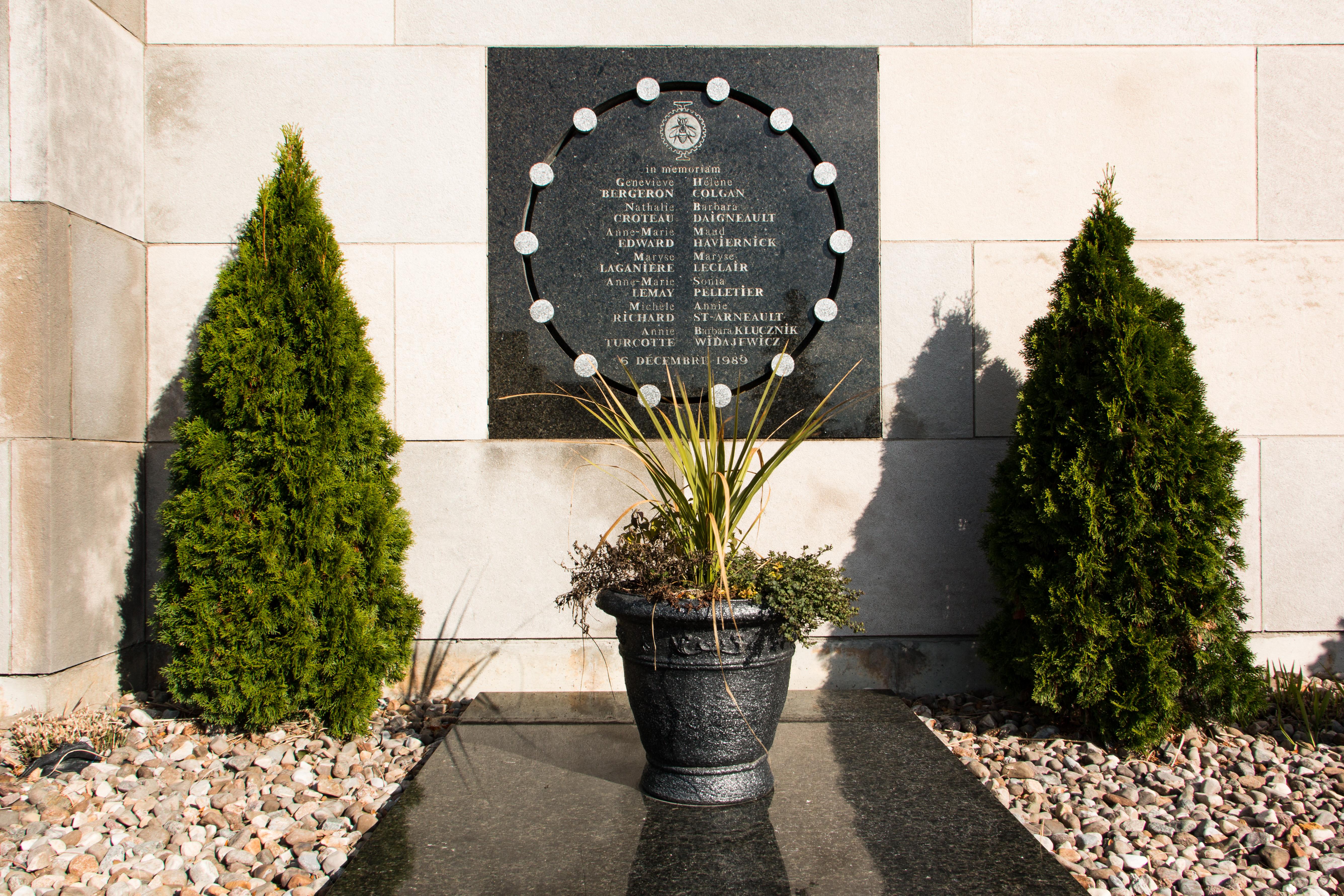On December 6, 1989, a 25-year-old man, Marc Lépine, killed 14 women and injured 10 more at the École Polytechnique engineering school in Montreal, telling his victims that he was “fighting feminism.” He spelled out in a note that his motivation was “political,” “Because I have decided to send the feminists, who have always ruined my life, to their Maker.” Lépine had previously applied to and been rejected by the school.
The attack appears to be the first documented mass killing explicitly motivated by antifeminist resentment, but his beliefs reflected an already developing ideology of perceived male victimhood at the hand of women—an ideology that would spur future mass killers. In his note, Lépine denounced feminists for “want[ing] to keep the advantages of women … while seizing for themselves those of men”—a perspective that aligns closely with the men’s rights ideology (sometimes called “masculinism”) that developed in the United States and Canada following the successes of the 1970s women’s movement. Men’s rights activists view themselves as victims of the feminist movement, arguing that women’s successes have come at the expense of men.
This backlash against women’s moderate advances grew and coalesced in the late 1980s and into the ‘90s. Louise Cousineau, a journalist for the Montreal newspaper La Presse, argued that “in the reports dealing with the massacre there has been little mention of the current wave of anti-feminism throughout North America, which this killer suddenly epitomizes.” (My feature article “Before the Alt Right” delves deeper into the growth of the men’s rights movement and another mass killing, in Texas in 1991, driven by a man’s fury toward women.)
Thirty years later, attacks explicitly driven by misogyny have increased in frequency. They are increasingly connected to a newer community that has developed from men’s rights ideology and a sense of male victimhood at the hands of women: that of misogynist “incels,” men who identify as “involuntarily celibate” and view their lack of sexual access to women as an injustice perpetrated against them. For those who perpetrate or glorify mass violence, this violation of their perceived male sexual entitlement justifies fatal retribution against women. Though this was less explicit in Lépine’s stated motivation, further reporting from La Presse suggests a similarity: “he was unable to make friends with women. It would appear that the repeated disappointments resulted in a such a high degree of frustration that he became obsessed.”
According to the Global Terrorism Index, which only recently started categorizing terrorist attacks by “incel extremists,” there have been five such attacks in North America in the tracked period from 2002 to 2018. (Four of these attacks took place from 2014-2018.) GTI reports that incel extremist attacks account for 9.5 percent of total fatalities in their documented terrorist attacks, making them, in the words of GTI, “the third deadliest group or affiliation” in North America. The five terrorist attacks that the GTI categorizes as “incel extremist” do not include all the successful or attempted acts of mass violence that have been documented in which incel ideology formed part of the perpetrator’s worldview.
In addition to the inclusion of incel extremists in the Global Terrorism Index, in the U.S. the Federal Bureau of Investigation (FBI), the military, and some local police departments, recently began monitoring the threat posed by the mobilization of self-identified incels. In June 2019, an Air Force spokesperson confirmed the inclusion of information about incels in a security briefing that was created “following basic threat analysis on an increase in nationwide activity by the group.” A screenshot from the briefing appeared online the day after Army veteran Brian Isaack Clyde, who frequently shared incel and far-right conspiracist content on his social media, was thwarted in his attempted mass shooting at a Dallas Courthouse.
On December 6, Canada observes a National Day of Remembrance and Action on Violence Against Women. This year and last, the country has another mass killing motivated by misogyny to remember: the April 2018 Toronto van attack that killed 10 pedestrians. “The Incel Rebellion has already begun!” the perpetrator, Alek Minassian, posted on Facebook before his attack. Minassian told police afterward, in an interview only recently released to the public, that he sought to “inspire future masses” with his attack. He was strongly influenced by Elliot Rodger, the 2014 Santa Barbara incel mass killer who has been glorified by the misogynist incel movement. Minassian currently awaits trial for the attack.
In the U.S., successful incel-related attacks occurred in 2014 with Rodger; in 2015, with Christopher Harper-Mercer, who killed nine people at Umpqua Community College; and most recently in November 2018, when Scott Beierle killed two people and wounded others at a yoga studio in Tallahassee. The perpetrator of a 2017 attack at Aztec High School, in New Mexico, also glorified Rodger online.
“Marc Lépine was not the last of the dinosaurs; it’s the opposite,” Mélissa Blais, an expert on antifeminism and the Polytechnique shooting, told The Guardian. “It’s worrying. We absolutely need to renew our view of current forms of antifeminism, and to be able to speak about it without being afraid.” The Guardian reports Blais’ perspective that “unwillingness to call violence against women what it is: an act of hatred” deters effective responses. To counter this avoidance, Blais campaigned to have the commemorative plaque, which evoked the “victims of the Polytechnique tragedy,” replaced with a more explicit sign: “This park is named in the memory of 14 women assassinated in an antifeminist attack.”

